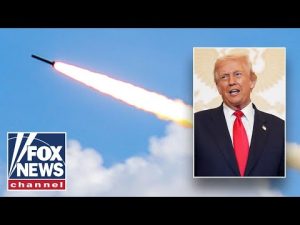In the bustling streets of New York City, as the autumn leaves begin to fall, a political whirlwind is brewing. The upcoming election is shaping up to be as contentious as ever, particularly in the race involving Zoran Mamdani, a candidate supported by some members of the Jewish community through a campaign called “Jews for Zoran.” This door-knocking and phone-banking push has stirred various reactions across the city, igniting debates on the political landscape and what it means for communities within the city that never sleeps.
New Yorkers, proud of their rich diversity and vibrant communities, are closely watching this election. Enthusiasts supporting Mamdani believe that he will fight for affordability and safety for all families. However, not everyone is buying the narrative that he’s a beacon for Jewish voters. Some critics argue that the support displayed by certain groups claiming to represent Jewish interests may be a mere façade, with many believing that the Jewish community in New York remains largely unconvinced of Mamdani’s suitability for office. It seems the electorate is split: while a select few rally behind Mamdani, many others raise eyebrows at his past and the affiliations of his supporters.
One of the key players in this swirling debate is the organization behind the “Jews for Zoran” campaign. Critics hastily brand this group as part of New York’s radical left, suggesting that their version of “Jewish” values is as genuine as a three-dollar bill. There’s a sense that many traditional Jewish voters are keenly aware of Mamdani’s controversial history, including allegations of anti-Semitism, leaving them wary of aligning themselves with his candidacy. Polls suggest that Mamdani’s appeal may be limited, with a reported less than 10% of Jewish voters likely to cast their ballots in his favor. It’s a statistic that underscores the uphill battle he faces.
Meanwhile, the Democratic Party appears to be rallying behind Mamdani, with notable figures throughout the state and city stepping in to offer their endorsement. This has sparked fresh debates over the party’s direction, as Democrats fear alienating their traditional voter base amid rising socialist sentiments within their ranks. For many, this illustrates a culture of fear that diverts from the core values traditionally associated with the party, raising questions about how this will shape both local and national politics in the years to come.
One potential outcome, should Mamdani secure a victory, could send ripples through the already dynamic New York political scene. There are concerns, articulated by some Republican commentators, that his policies might clash significantly with the governing approach of the state, especially if a Republican were to take the governor’s office. Speculation abounds about whether federal funding would be available to support Mamdani’s initiatives or if governmental gridlock could ensue in the event of a Mamdani mayorship paired with a Republican governor.
As Election Day approaches, the stakes grow higher, and the divisions among voters become clearer. The outcome could reshape New York City politics for years to come, highlighting the critical juncture at which both major parties find themselves. Regardless of which side prevails in this high-stakes contest, one thing remains certain: the dynamics of power, influence, and community values are more vital than ever, and New York is at the heart of it all.







